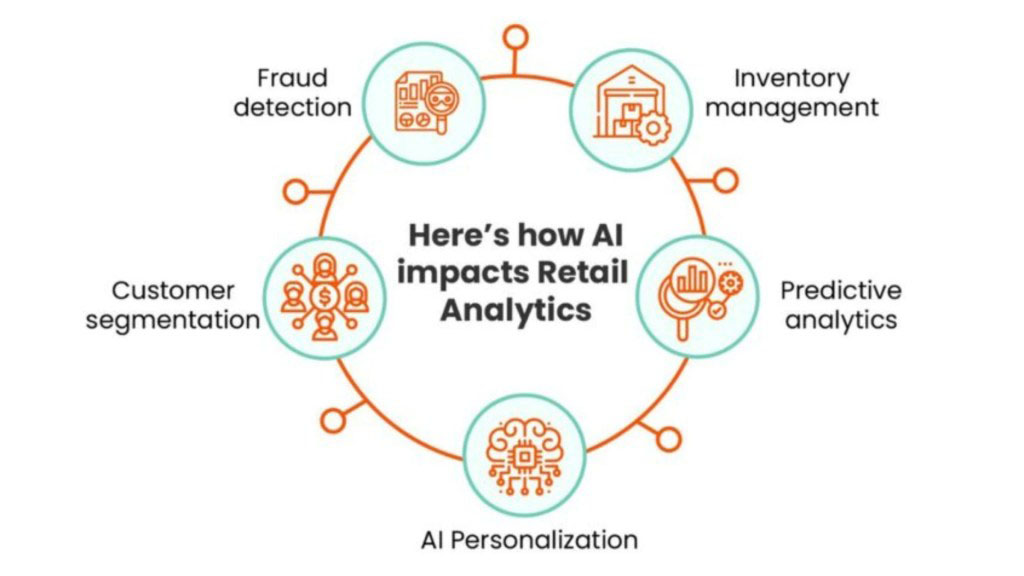Data Analytics. Imagine you’re at the helm of a vast ship navigating through a foggy sea. You can barely see the horizon, but you can chart a course to your destination with the right tools and knowledge. In today’s business world, data analytics is that navigational tool, guiding companies through the dense fog of information to uncover valuable insights. Let’s explore how data analytics works, its impact on businesses, and the future trends shaping this field.
What is Data Analytics?

Data analytics involves examining large data sets to uncover patterns, correlations, and trends. This process helps businesses make informed decisions and solve complex problems. Here’s a breakdown of how it works:
- Data Collection: Gathering data from various sources such as customer transactions , social media, and market research.
- Data Processing: To guarantee accuracy and usability, the data should be cleaned and arranged.
- Data Analysis: applying computational and statistical techniques to derive relevant insights.
- Data Visualization: Presenting the results in graphical formats like charts and graphs for more straightforward interpretation.
The Impact of Data Analytics on Businesses

Data analytics has revolutionized how businesses operate, offering numerous benefits. Here’s how:
Improved Decision-Making
- Informed Choices: Businesses can make decisions based on evidence rather than intuition by analyzing data.
- Predictive Insights: Predictive analytics uses historical data to forecast future trends, helping companies anticipate market changes and customer needs.
Enhanced Customer Experience
- Personalization: Data analytics enables businesses to tailor products and services to individual customer preferences.
- Customer Retention: Analyzing customer feedback and behavior helps identify issues and improve satisfaction.
Operational Efficiency
- Process Optimization: Businesses can identify inefficiencies and streamline processes for better performance.
- Cost Reduction: Data analytics helps identify areas where costs can be minimized without compromising quality.
Competitive Advantage in Data Analytics
- Market Trends: Businesses can maintain an advantage over rivals by recognising new trends and modifying their approaches accordingly.
- Benchmarking: Analyzing competitors’ data allows businesses to benchmark their performance and identify areas for improvement.
Fundamental Techniques in Data Analytics
Understanding various techniques can help in leveraging data more effectively. Here are some essential methods:
Descriptive Analytics
- Summary Statistics: A summary of past data through metrics like mean, median, and mode.
- Trend Analysis: Identifies patterns and trends over time to understand historical performance.
Diagnostic Analytics
- Root Cause Analysis: Investigate the reasons behind past events to understand what went wrong and why.
- Correlation Analysis: Examines relationships between different variables to identify potential causes of issues.
Predictive Analytics
- Forecasting: makes predictions about the future and trends based on historical data.
- Risk Assessment: Evaluates potential risks and their impact on business operations.
Prescriptive Analytics
- Optimization Models: Suggests the best course of action based on data analysis.
- Decision Support Systems: Provides recommendations to support decision-making processes.
Future Trends in Data Analytics

The field of data analytics is continuously evolving. Here are some trends to watch for:
Artificial Intelligence and Machine Learning
- Automated Analysis: Compared to conventional techniques, AI and machine learning algorithms can analyze data more quickly and accurately.
- Predictive Modeling: Enhanced models provide more precise predictions and insights.
Big Data
- Volume and Variety: The ability to process and analyze large volumes of diverse data sets will become increasingly important.
- Real-Time Analytics: Analyzing real-time data allows for quicker decision-making and responses.
Data Privacy and Security
- Enhanced Protection: Strong security measures are required to safeguard sensitive data as data collecting grows.
- Regulatory Compliance: Companies need to follow data protection laws to stay out of trouble with the law and to keep customers’ trust.
Data Democratization in Data Analytics
- Accessible Tools: User-friendly analytics tools make data analysis accessible to non-experts, empowering more people to make data-driven decisions.
- Self-Service Analytics: Organizations are adopting platforms that allow employees to analyze data and generate reports independently.
Imagine navigating your business through the sea of data with precision and confidence. Data analytics provides the compass and map needed to steer towards success. Through the application of data analytic insights, businesses may improve consumer experiences, make more informed decisions, and gain a competitive advantage. Maintaining that advantage and prospering in a world where data is becoming more and more important will require keeping up with the most recent developments in data analytics as technology develops.



